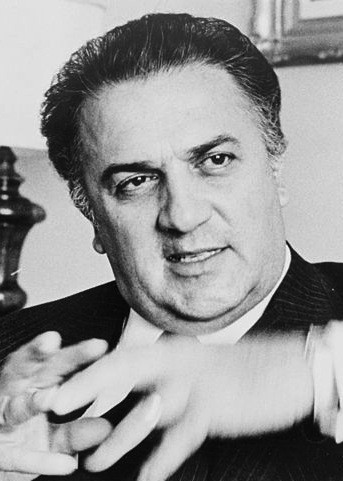

Some great examples you may want to check out on YouTube, for comparison’s sake: Club Silencio in Mulholland Dr., Dean Stockwell’s character singing “In Dreams” in Blue Velvet, Audrey’s abrupt diner dance in Twin Peaks.

This similar style can be seen in nearly all of David Lynch’s work. The scene is particularly effective in that music is not used often in the film, but when it is, it becomes the centerpiece of the scene. For example, when a young Guido and his friends visit La Saraghina on the beach, she dances the Rumba in an amazing combination of visuals and music that helps the viewer understand the main character further. In many of 8 ½’s most compelling scenes, the music took center stage. Music has also plays a key focus in his films not just to enhance a visual or to make dialog more dramatic when he used music it was often the key focus for that scene.

Obviously, he was not the first to use these techniques, but he was one of the the first to make it look really good. the use of spot lights as emphasis), blurring dreams and reality, and abrupt endings open for interpretation. These films helped pioneer many techniques used in contemporary film such as non-liner story lines, visuals to create mood instead of dialog, unique lighting effects (i.e. Essentially any film director known for iconic visuals or unique styles has tie backs accredited to Fellini. The list of American filmmakers includes Martin Scorsese, Stanley Kubrick, George Lucas, Woody Allen, David Lynch, Terry Gilliam, Tim Burton, among many others. With Federico Fellini’s La Dolce Vita (1960) & 8 ½ (1963), less than 6 hours of film inspired several generations of filmmakers, and those not inspired directly by his films were inspired second hand by those who were.


 0 kommentar(er)
0 kommentar(er)
